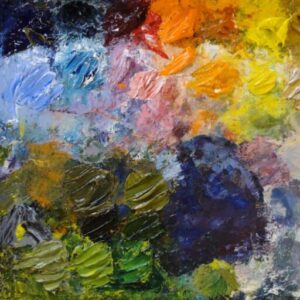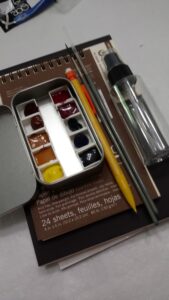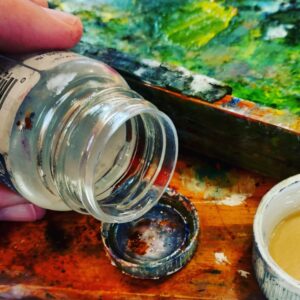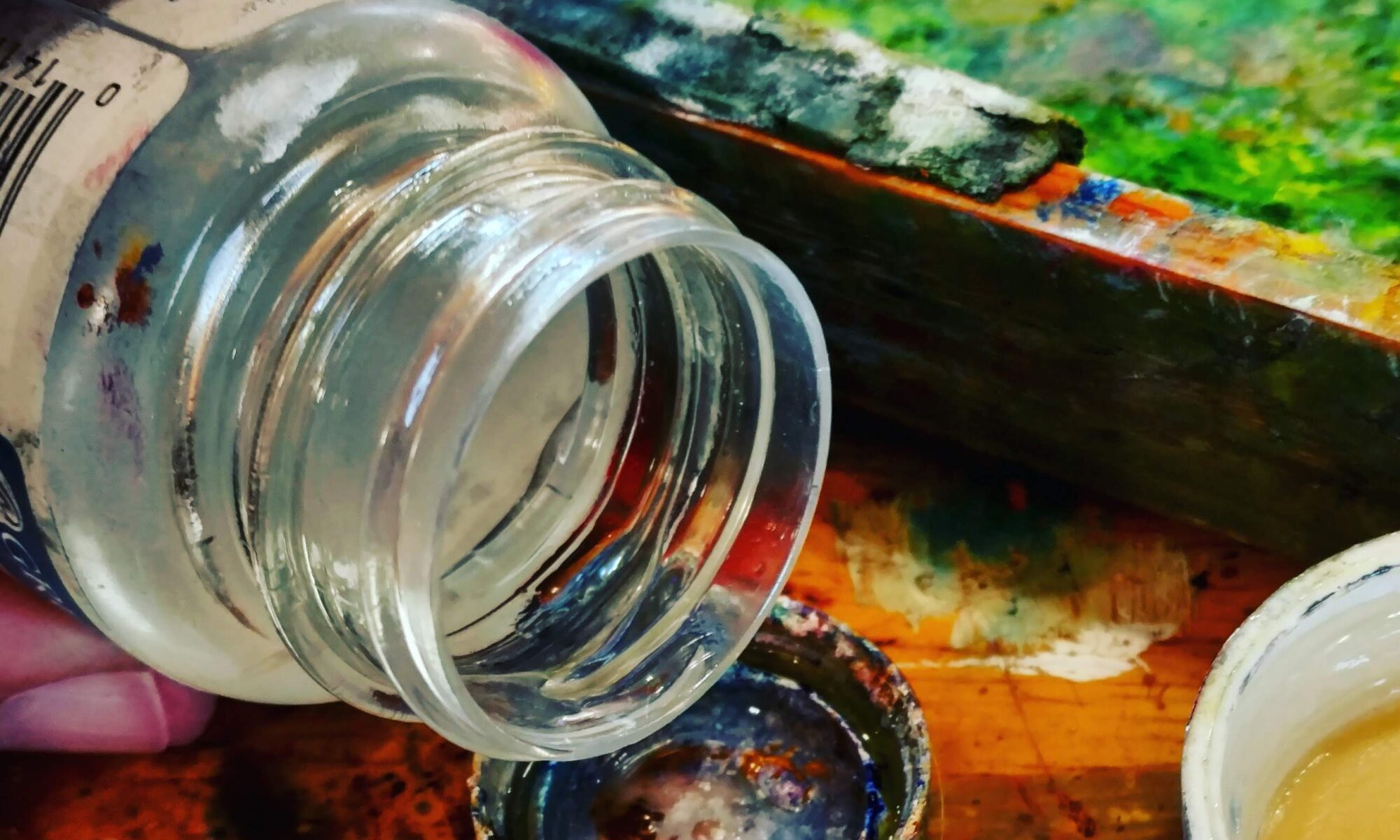I’m wearing the tiara in honor of Queen Elizabeth II, whose state funeral is today.
Cheap paint
There are many good paint brands out there. They tend to be more expensive, but price is not the sole indicator of quantity. There are an equal number of horrible paints on the market. You might think you’ve saved a few bucks, but that’s a mistake that will cost you in time and frustration.
There are differences in the binders, in the amount of pigment the manufacturer uses, and how the pigments are stabilized. There may be filler or drying agents added.
Instead of buying cheaper paint, cut down on the number of colors you buy. I suggest a system of paired primaries, as explained here. Oil painters will add titanium white; watercolor painters should avoid white altogether at the outset.
My personal preferences are: Golden acrylics
QoR watercolors
Unison pastels
RGH or Gamblin for oils.
These aren’t the only good paints out there, of course; they’re just my go-to brands.

Hues and convenience mixes
Art paints are marketed with names that appeal to our sense of tradition. If you buy Naples Yellow thinking you’re buying an historic pigment, think again: the modern paint is a convenience mix replacing the historic (and toxic) lead antimonate.
Expect to find, at minimum, the following information on the label of your paint tube:
- Manufacturer’s name or common name for the color;
- The CII number and, sometimes, the name of the pigment(s);
- The manufacturer’s lightfastness or permanence rating.
The CII code consists of two letters and some numbers. Most paints start with a “P” which means it’s a pigment, not a dye. The next letter is the color family: PR is red, PY is yellow, etc. The number is the specific pigment included in the tube.
When you compare paints with the same names, check their CIIs. It seldom makes sense to buy a tube of paint that contains more than one pigment. These blends are meant to look like something else-either an historic pigment or an expensive one. They don’t behave like the pigments they’re named after. For example, ‘cadmium yellow hue’ may look like cadmium yellow coming out of the tube, but it makes insipid greens.
If you are comfortable painting with a hue, learn what’s in it and mix it yourself. You always have the greatest flexibility by working with pure pigments (rather than mixes) out of the tube.

No-name brushes
You can buy a whole set of bristle brushes on Amazon for $20. The same price will get you a set of genuine sable brushes for watercolor. Good deal, right? Wrong.
Natural bristles have splits at the end, called flags. These help the bristles hold more paint. (With high-stain pigments, the flags can discolor, but that’s not a sign of permanent damage.) With good brushes, bristles are cleaned, sorted, sized and wrapped into bundles where the flags cup, or curl naturally into each other. This bundle is then glued into the ferrule with a solvent-resistant glue. The best ferrules are seamless nickel-plated copper, crimped onto a lacquered hardwood handle.
Badly cupped brushes and poor-quality bristles can be made to look good with lots of sizing that dissolves as soon as the brush is used. Bad brushes often lose hairs, which can ruin a painting. And ferrules that fall off the handles can’t be crimped back on.
You need fewer brushes than you think. In watercolor, a ½” flat, a 1″ wash brush, a #6 quill and a #8 round are enough to get you started. Add a set of short synthetic flats (or mottlers, as they’re sometimes called) in ¾”, 1″ and 1½”. A little pointed brush to sign your name is helpful.
In oils and acrylics, a life list would include:
- Brights (short flats) in 6, 8, 10, possibly 12, depending on how big you’re going to paint;
- Rounds: 2, 4, 6;
- Long (true) flats: 3, 4, 5;
- Filbert: 2, 4, 6;
- A few tiny rounds in sable for detail and to sign your name: 2,4;
- 1″ badger blender brush;
- 2″ spalter or hog bristle background brush-this is for blocking.
I recommend Princeton brushes to students; they come in a range of quality and material and are good value for money. I’m currently painting with Rosemary & Co. in both watercolor and oils, but they’re quite expensive. Other brushes I’ve known and loved include Isabey, and Winsor & Newton. But brushes are a highly-personal thing, and you’re best buying one or two from a maker and running them through their paces before you commit to a relationship.
Dollar-Store painting boards
Why does one manufacturer charge $15 for a painting board when you can buy one at a local discount store for $2? There’s a difference in quality at every step. The cheap board is made of cardboard, which warps. The gesso is thin and porous, so paint bleeds through it, breaching the all-important barrier between surface and substrate. The canvas is glued with a water-based glue, so if the board gets wet, it will start to separate.
Still, the price of a premium painting board is too high for painting exercises. Instead, buy a tablet of linen or canvas and tape sheets down on a board. For linen, I like Centurion; for canvas, Dick Blick’s house brand. If you do end up creating a masterpiece, you can glue it to a stable board with PVA adhesive.
As a bonus, a tablet of painting canvases is a lot lighter than the same number of boards when you’re traveling.

Painting mediums
I used to spend a lot of money on painting mediums tailored for specific situations-matte finish, quick-drying, slow-drying. However, because these all have solvents in them, they’re not legal to carry on airplanes. I found myself replacing them on every trip. Eventually I went back to the jar of linseed oil I’ve been carting around since my salad days. It’s cheaper, it lasts forever, and you can carry it in your checked luggage. (An aside-you can also fly with a small jar of Gamsol, but not Turpenoid; they have different flash points.)
Linseed oil is the binder for most oil paints. It’s harmless; it’s made from flax-seed, the same thing I eat for breakfast. The same cannot be said of the driers and solvents in many mediums.
If you’re worried about yellowing (I’m not, because my paints are linseed-oil-based) then use stand oil. That’s linseed oil that’s been polymerized by heating.
No blog Wednesday–I’m sailing this week.

